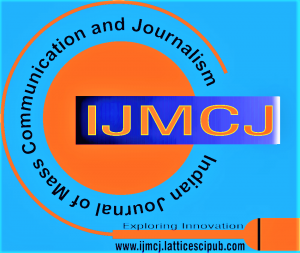![]()
Gender Stereotyping: The Role of Traditional and social media: An Analysis of Audience Perception
Aparna S Menon1, Shyamali Banerjee2
1Aparna S Menon, MA, Department of Journalism and Mass Communication, Jain deemed-to-be University, Bengaluru (Karnataka), India.
2Dr. Shyamali Banerjee, Associate Professor, Department of Media Studies, Jain deemed-to-be University, Bengaluru (Karnataka), India.
Manuscript received on 09 August 2022 | Revised Manuscript received on 12 September 2022 | Manuscript Accepted on 15 September 2022 | Manuscript published on 30 September 2022 | PP: 6-10 | Volume-2 Issue-1, September 2022. | Retrieval Number: 100.1/ijmcj.A1049093123 | DOI:10.54105/ijmcj.A1049.092122
Open Access | Ethics and Policies | Cite | Mendeley | Indexing and Abstracting
© The Authors. Published by Lattice Science Publication (LSP). This is an open-access article under the CC-BY-NC-ND license (http://creativecommons.org/licenses/by-nc-nd/4.0/)
Abstract: Gender stereotyping has been rampant since the initiation of broadcast media in the late 50s and early 60s. However, as advertisements are a more persuasive form of communication, the perception and normalization of stereotypes and the degree of persuasion become more evident and probable. Television and social media advertisements differ in their portrayal. Hence, stereotypes and the level of influence through persuasion need to be studied separately. This research compares and analyses television and social media advertisements based on stereotypes. In addition, the audience’s perception and the level of persuasion are analyzed. Forthis purpose, the researcher has used content analysis and survey through questionnaire methods to identify the different socio-cultural factors that strengthened the process of stereotyping through media and to find out a probable solution to minimize, if not eliminate, this problem.
Keywords: Social Media Advertisements, Gender Stereotypes, Audience’s Perception, Influence Through Persuasion
Scope of the Article: Communication
